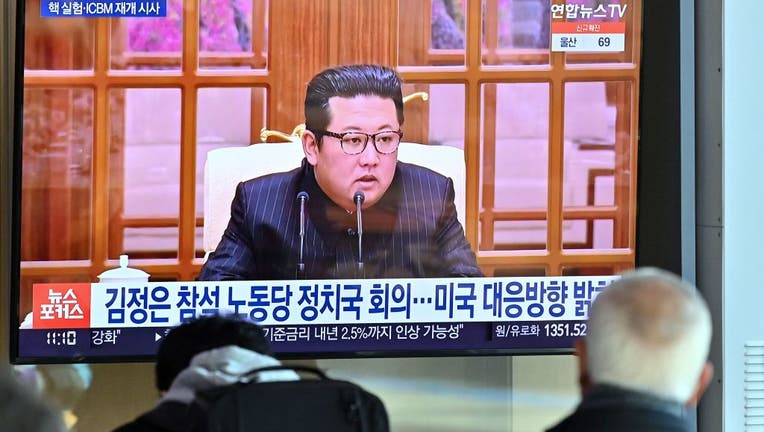North Korea's latest weapons launch ends in failure, South Korea says

People watch a television screen showing a news broadcast with file footage of North Korean leader Kim Jong Un, at a railway station in Seoul on January 20, 2022, after North Korea hinted it could resume nuclear and long-range weapons tests, as it pr
SEOUL, South Korea (AP) - North Korea’s latest weapons launch on Wednesday apparently ended in failure, South Korea’ military said, amid speculation that the North could soon launch its biggest long-range missile in its most significant provocation in years.
It wasn’t immediately clear what North Korea launched on Wednesday morning or at what stage it had an apparent failure. But the launch, the 10th of its kind this year, shows North Korea is determined to press ahead on its push to modernize its weapons arsenal and pressure its rivals into making concessions amid dormant denuclearization talks.
South Korean and U.S. intelligence authorities were analyzing details of the launch made from the Pyongyang region around 9:30 a.m. that apparently failed, South Korea’s Joint Chiefs of Staff said in a statement that didn’t have further details.
Experts say past failures still have moved North Korea closer to its goal of acquiring a viable nuclear arsenal that could threaten the American homeland. Of eight "Musudan" intermediate-range missiles tests in 2016, only one of those launches was seen by outside analysts as successful, which led to debates of whether North Korea’s path toward ICBMs had been cut off.
However, the North in 2017 flew more powerful intermediate-range missiles over Japan and conducted three successful test-flights of ICBMs that demonstrated a potential range to strike deep into the U.S. mainland.
If North Korea makes a new ICBM launch, it would be its highest-profile weapons tests since those tests more than four years ago.
The U.S. and South Korean militaries said last week that North Korea had tested an ICBM system in two recent launches, referring to the developmental Hwasong-17 missile that North Korea unveiled during a military parade in October 2020.
In the two recent launches on Feb. 27 and March 5, the North Korean missiles flew medium-range distances, and experts have said North Korea could eventually perform a full-range ICBM test.
The North has said it tested cameras and other systems for a spy satellite and released what it said were photos taken from space during one of the two tests, but it didn’t confirm what rocket or missile it launched.
Experts say North Korea aims to boost its ICBM capability while trying to place its first spy satellite into orbit. North Korean leader Kim Jong Un has vowed to acquire an improved ICBM and a spy satellite among an array of sophisticated weapons systems he says he needs to cope with what he calls American hostility.
The Hwasong-17 is North Korea’s biggest missile, which could potentially fly up to 15,000 kilometers (9,320 miles), far enough to strike anywhere in the U.S. and beyond. The 25-meter (82-foot) missile, which was shown again at a defense exhibition in Pyongyang last year, has yet to be test-launched.
The three ICBMs that North Korea tested in 2017 were the Hwasong-14 and Hwasong-15. Some analysts say developing a larger missile could mean the country is trying to arm its long-range weapons with multiple warheads to overcome missile defense systems.
Other missiles tested this year were mostly short-range, nuclear-capable weapons which place South Korea and Japan, both key U.S. allies, within striking distance.

